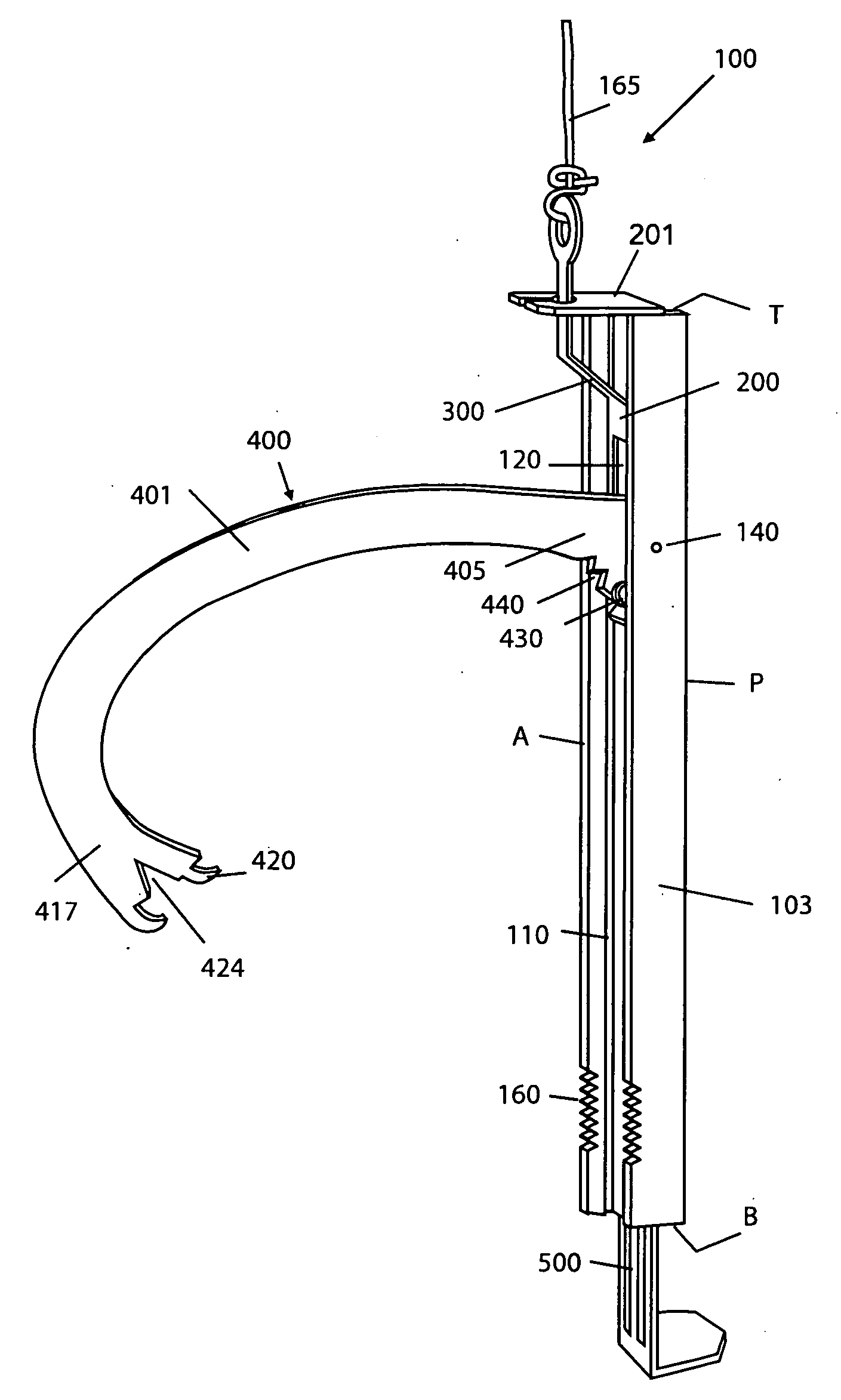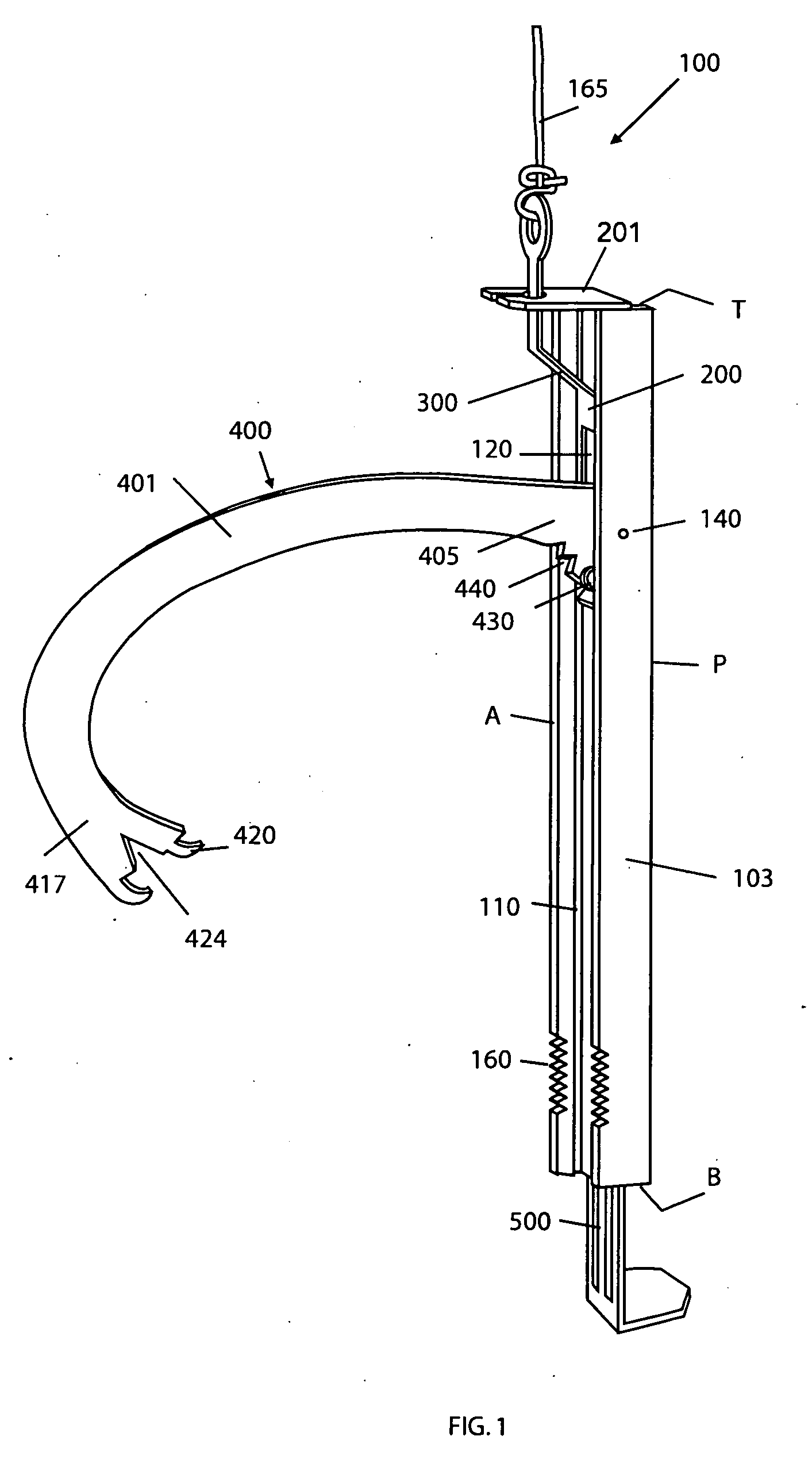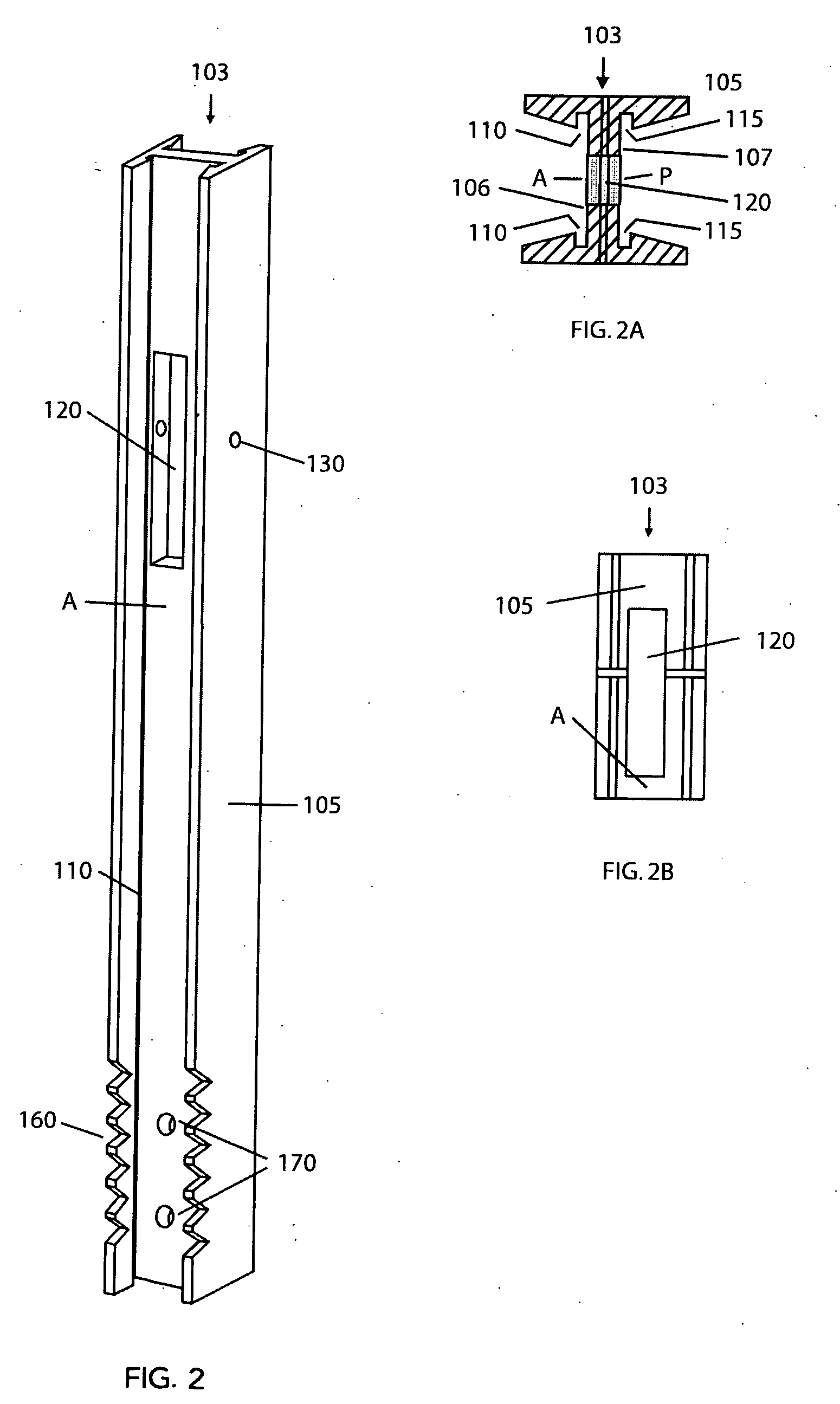Gravity actuated retrieval device
- Summary
- Abstract
- Description
- Claims
- Application Information
AI Technical Summary
Benefits of technology
Problems solved by technology
Method used
Image
Examples
Embodiment Construction
[0025] The present invention will now be described more fully in detail with reference to the accompanying drawings, in which the preferred embodiment of the invention is shown. This invention should not, however, be construed as limited to the embodiment set forth herein; rather, the embodiment is provided so that this disclosure will be complete and will fully convey the scope of the invention to those skilled in the art.
[0026]FIG. 1 provides a general view of an object retrieval device 100 according to the invention. The object retrieval device 100 comprises a frame or chassis 103, a retrieval means 400, an actuation means 200, and a suspension means 165.
[0027]FIGS. 2, 2A and 2B illustrate the frame 103. FIG. 2 is a perspective front elevational view that shows the frame 103, which provides means for retaining the actuation means 200 and the retrieval means 400. In the embodiment shown, the frame 103 is an elongate member 105 having a top end T, a bottom end B, an anterior side...
PUM
 Login to View More
Login to View More Abstract
Description
Claims
Application Information
 Login to View More
Login to View More - R&D
- Intellectual Property
- Life Sciences
- Materials
- Tech Scout
- Unparalleled Data Quality
- Higher Quality Content
- 60% Fewer Hallucinations
Browse by: Latest US Patents, China's latest patents, Technical Efficacy Thesaurus, Application Domain, Technology Topic, Popular Technical Reports.
© 2025 PatSnap. All rights reserved.Legal|Privacy policy|Modern Slavery Act Transparency Statement|Sitemap|About US| Contact US: help@patsnap.com



